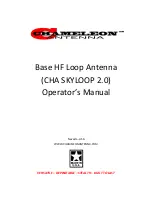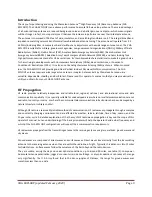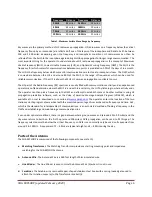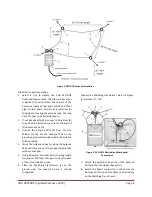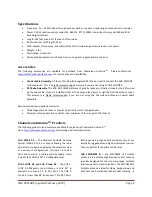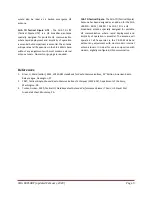
CHA SKYLOOP
(updated February, 2020)
Page 3
Introduction
Thank you for purchasing and using the Chameleon Antenna
TM
High Frequency (HF) Base Loop Antenna (CHA
SKYLOOP). The CHA SKYLOOP is an extreme performance horizontal full-wave loop antenna. The main advantages
of a horizontal loop antenna are reduced background noise and a better gain over a dipole
—
which means signals
will be stronger.
In fact, most operators can’t believe the increase in performance over their old dipole antenna.
The antenna is comprised of 265 feet of wire, insulators, and a matching transformer unit. The integral broadband
impedance matching network transformer allows broadband antenna tuning. The antenna will operate from 3.5 -
54 MHz (including 80m
–
6m amateur bands) without any adjustment with a wide range antenna tuner. The CHA
SKYLOOP is suitable for military, government agencies, non-governmental organizations (NGOs), Military Affiliate
Radio System (MARS), Civil Air Patrol (CAP), Amateur Radio Emergency Service (ARES) / Radio Amateur Civil
Emergency Service (RACES), Salvation Army Team Emergency Radio Network (SATERN), and hams looking for a
high performance wire antenna for HF base stations.
Its’ low observable characteristics also make it a good choice
for hams living in developments with Homeowners Associations (HOAs), deed restrictions, or Covenants,
Conditions & Restrictions (CCRs). It is also an outstanding shortwave listening (SWL) antenna. When mounted
low, the CHA SKYLOOP will provide good Near-Vertical Incident Sky wave (NVIS) communication. The CHA
SKYLOOP antenna requires a wide range antenna tuner or coupler. Antennas built by Chameleon Antenna
TM
are
versatile, dependable, stealthy, and built to last.
Please read this operator’s manual so that you may maximize the
utility you obtain from your CHA SKYLOOP antenna.
HF Propagation
HF radio provides relatively inexpensive and reliable local, regional, national, and international voice and data
communication capability. It is especially suitable for undeveloped areas where normal telecommunications are not
available, too costly or scarce, or where the commercial telecommunications infrastructure has been damaged by a
natural disaster or military conflict.
Although HF radio is a reasonably reliable method of communication, HF radio waves propagate through a complex
and constantly changing environment and are affected by weather, terrain, latitude, time of day, season, and the
11-year solar cycle. A detailed explanation of the theory of HF radio wave propagation is beyond the scope of this
operator’s manual, but an understanding of th
e basic principles will help the operator decide what frequency and
which of the CHA SKYLOOP configurations will support their communication requirements.
HF radio waves propagate from the transmitting antenna to the receiving antenna using two methods: ground waves and
sky waves.
Ground waves are composed of direct waves and surface waves. Direct waves travel directly from the transmitting
antenna to the receiving antenna when they are within the radio line-of-sight. Typically, this distance is 8 to 14 miles
for field stations. Surface waves follow the curvature of the Earth beyond the radio horizon.
They are usable, during the day and under optimal conditions, up to around 90 miles, see table (1). Low power,
horizontal antenna polarization, rugged or urban terrain, dense foliage, or dry soil conditions can reduce the range
very significantly. The U.S. Army found that in the dense jungles of Vietnam, the range for ground waves was
sometimes less than one mile.

